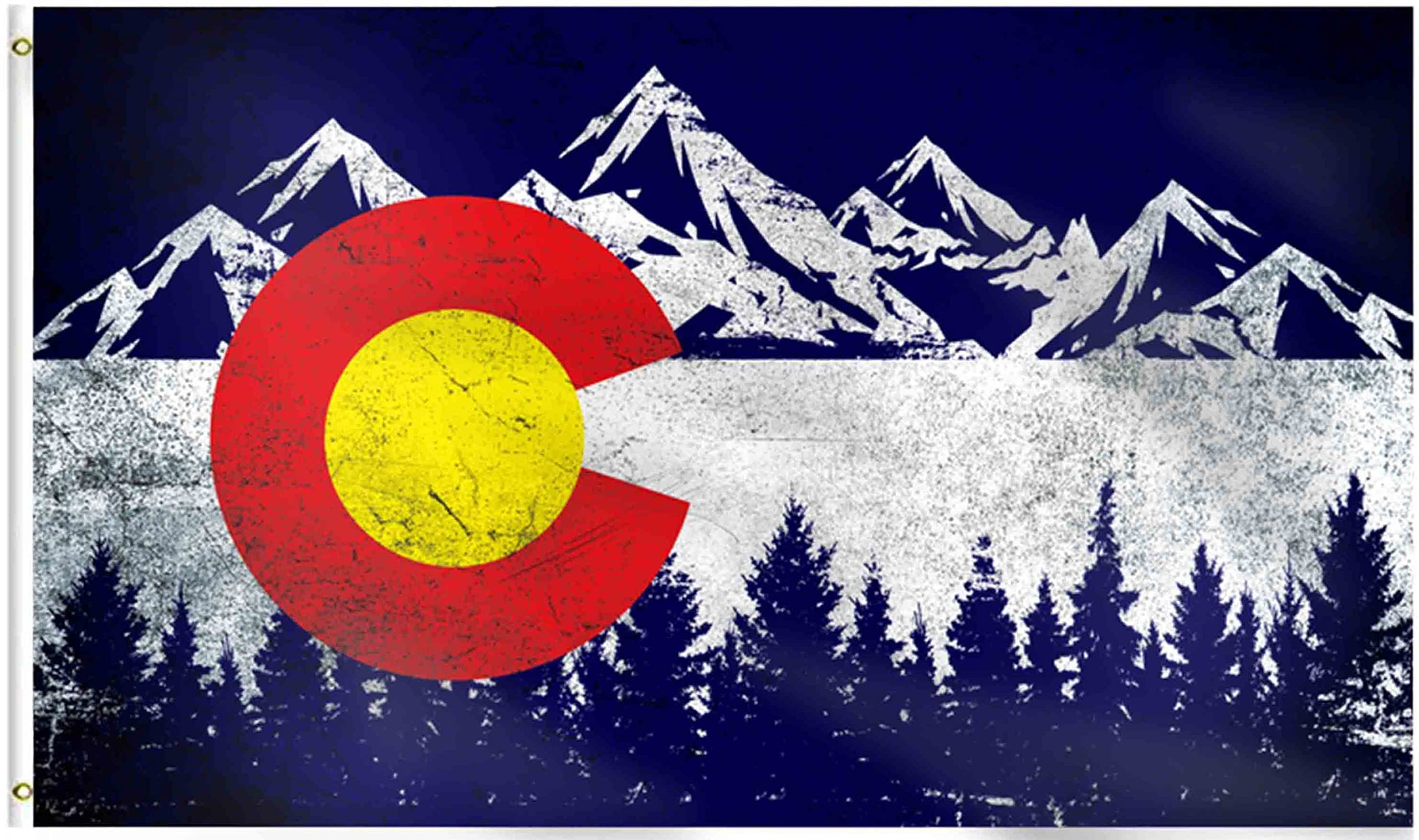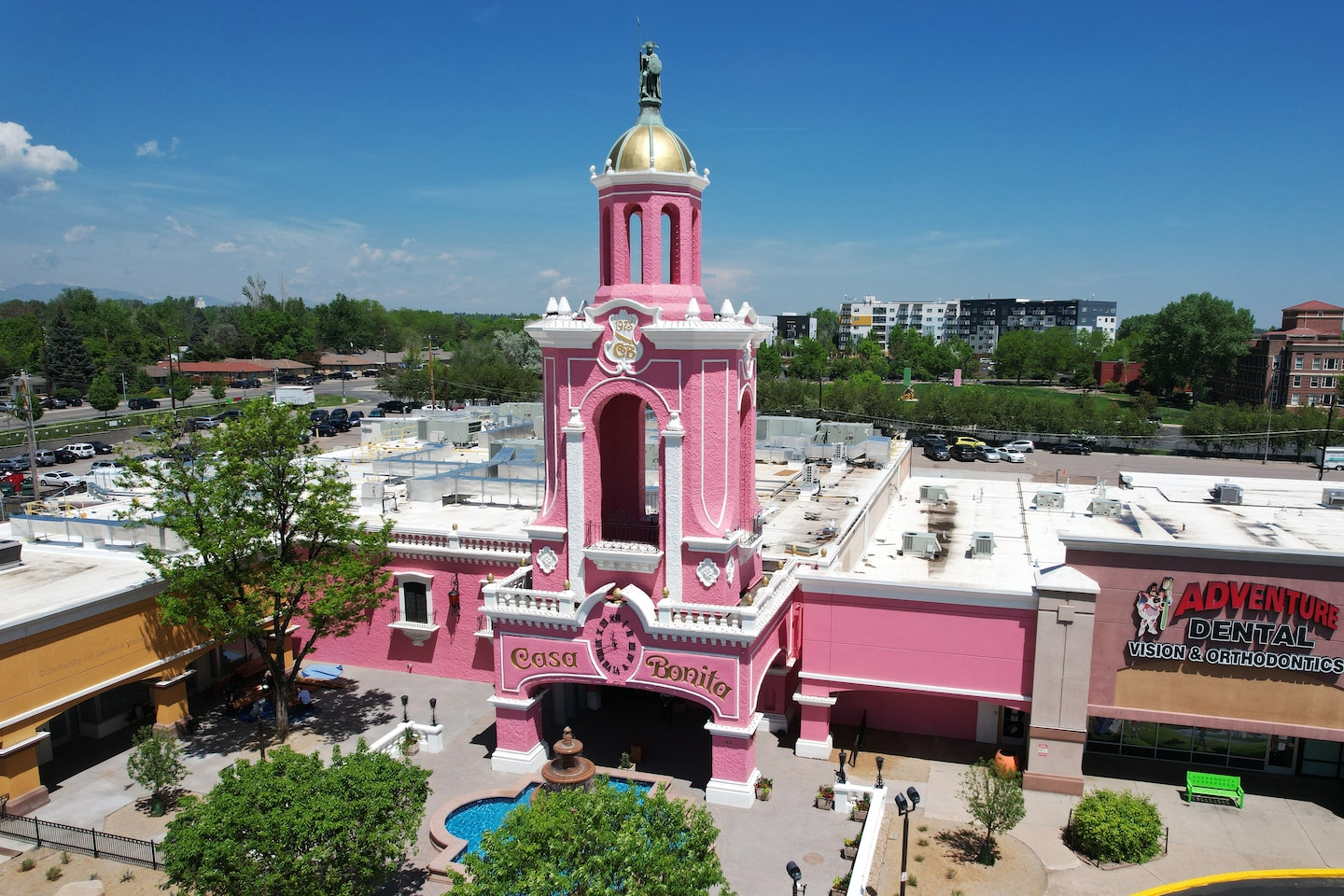Americans of enormous wealth, Abby and John D. Rockefeller Jr. tapped their bottomless resources to restore a national treasure, Colonial Williamsburg. Long neglected, that hotbed of revolutionary fervor came back to life beneath a long, steady rain of money from the Rockefeller fortune.
That story came to mind when I recently read that Casa Bonita has been brought back from the dead and made grander than before. Trey Parker and Matt Stone, the wealthy creators of the “South Park” TV series and the Broadway musical “The Book of Mormon,” have done for a weird and wonderful, vaguely Mexican restaurant in suburban Denver what the Rockefellers did for Virginia’s cradle of democracy.
Not a perfect parallel, I grant you. Patrick Henry, hero of Williamsburg, never dined on the burrito plate at the lowbrow Chartres of strip-mall America. If he had, his famous plea might have been a simple: “Give me death.” The food was that bad. The only remotely palatable thing on the menu at Casa Bonita was puffed dough drizzled with honey, which patrons summoned to their tables by the basket load, simply by raising a flag. Thomas Jefferson, had he visited this place, might have added to our unalienable rights a bottomless supply of sopaipillas.
Yet this vast and slapdash place is as much a time capsule of the 1970s as Williamsburg is a vessel of the 1770s. Casa Bonita was to “ethnic food” as KC and the Sunshine Band was to soul.
Casa Bonita! The name was like Shangri-La to the children of Colorado and vicinity. The restaurant’s fame radiated from Denver along the crossing axes of I-70 and I-25, starting as reality, then blurring into myth like the stories of Marco Polo. At 52,000 square feet, the restaurant was said to be so large that people got lost in its winding mysteries. It was said that indoor waterfalls plunged into fiberglass cenotes carved in the floor. That lithe divers leaped from cliffs into the deepest pool, as dazzled diners plowed through plates of tepid refried beans. That kid-size caverns brimmed with silver and gold while Black Bart chased — but never quite caught — his quarry.
All true. I know because I was there when it was new in 1974. I remember the line that stretched forever out the door, along the pink façade and down the sidewalk. I was there again some 35 years later with my own children in tow. By that time, the pink tower was surrounded by pawnshops and dollar stores. Inside, the pleasure palace of my boyhood reeked of chlorine, flatulence and decay. The Old West costumes in the sepia photo studio practically jiggled with lice. It didn’t matter. My kids loved it, just as I had.
Some blamed the pandemic for the death of Casa Bonita in 2021. I’m not sure a global health crisis was required, though. Sooner or later, the weird synergy of inedible food and gimcrack entertainment was bound to founder on the reef of a half-century of deferred maintenance.
Stone and Parker were insane to take on a restoration — but I understand and salute their insanity. “What would I do with a ton of money?” is a favorite game of Americans, and “save Casa Bonita” would be high on my list, too. In Episode 107 of their fast-talking, cut-and-paste animated masterpiece, the “South Park” team immortalized the magnetism that Casa Bonita cast over children. American popular culture often asks: How low can you go? Casa Bonita answered lustily. The restaurant was too big, too loud, too garish, too sloppy. Too everything U.S. of A.
Like the Rockefellers, Stone and Parker have rescued history by digging deep. A recent New York Times article recounted their project, tracking the expense of a new and better Casa Bonita from $10 million to $20 million to the number they finally settled on: “infinity dollars.” The new owners propose to serve good food from clean kitchens, to extract their divers safely from the pool without risk of electrocution, and to clean the floors every now and then. Radical stuff for the world’s worst — and most fun — restaurant.
I hope it works. Everything the new owners have poured their money into is stuff the target audience could not care less about. “The Disneyland of Mexican restaurants,” as Stone and Parker’s “South Park” kids called Casa Bonita, was built on madness, not mole. We live in a time when the food in many gas stations is better than the food served for half a century in one of the Denver area’s most popular restaurants. But is anyone the happier for it?
The things that made Casa Bonita a legend included delight, excess and permission — but not excellence. It was a place to be stupid, a place to overdo. It had no redeeming qualities, except joy. Good luck, saviors, in salvaging that. We need it.
I only regret that I have but one up vote to give for this glorious sprog.
Are you able to copy paste the text to bypass the paywall?
Here you go: https://lemmy.world/comment/269129
Thank you!
since ickplant already got it, I’ll reply to you with a better artcle too, this one from NYT.
The Refries That Bind: A Cavernous Cantina Returns, Cliff Divers and All With “infinity dollars” poured in by the creators of “South Park,” a fabled Colorado restaurant reopens with the same 1970s vibe and drastically improved food.
Colorado’s defining features include glorious mountain peaks, vivid seasonal colors, skiing and a widespread compulsion to exercise and eat well. But for generations of Colorado children, arguably the most commonly shared experience involved Casa Bonita, a vast, filthy, poorly-lit, underground restaurant with food that many diners deemed barely edible.
Casa Bonita — then sprawling over 52,000 square feet in Lakewood, a Denver suburb — served steamed refried beans, tacos and enchiladas to thousands of people a day, buffet-style. The dinner entertainment was a child’s fever dream: waterfalls, cliff divers, Black Bart’s Cave, faux gold and silver mines, puppet shows and a person in a gorilla costume chased by a sheriff, who sometimes joined in the cliff diving. Casa Bonita’s curious childhood grip was chronicled in an episode of “South Park.”
After that episode ran, Trey Parker and Matt Stone, the show’s creators, were regularly asked whether such a place actually existed. “Oh, that’s a place,” Mr. Parker would respond, he said recently. “It’s crazy. It’s weird.” Like so many Colorado children, Mr. Parker had held his birthday parties there.
Then, in 2020, Casa Bonita went bankrupt, hit by the pandemic slump. The place was already in disrepair, crumbling from deferred maintenance, rife with electrical hazards, the ventilation systems coated with grease and the carpet encrusted into something like concrete. The jokes about the food had earned it the nickname Casa NoEata. Still, its passing was mourned.
But in the coming weeks, the enormous casita will reopen with new owners: Mr. Parker and Mr. Stone, both native Coloradans, who have spent upward of $40 million to tear it down, rebuild it and, they joke, to keep everything the same, except now sanitary.
“It doesn’t stink like chlorine anymore,” Mr. Stone said in an interview in late May, during the final, frantic stretch to reopen. “We could have rebuilt this twice as big, for half as much money, but we spent so much restoring it, like a piece of art.”
Mr. Parker added: “And the food is excellent.”
Frying plantains for the mole. Indeed, Casa Bonita returns as one of the biggest Mexican restaurants in the world, and the new executive chef, Dana Rodriguez, is a six-time James Beard Award nominee. Local fans of Casa Bonita speak of the reopening as if the beloved “Orange Crush” Denver Broncos of 1977 had been revived from a cryogenic state. More than 100,000 potential customers have signed up on the restaurant’s website to make a reservation, Mr. Stone said.
“It’s its own Colorado thing,” said Rick Johnson last Friday night, when some 400 guests were invited for a test run, in the company of Mr. Stone and Mr. Parker. Mr. Johnson, 44, had come to the restaurant as a child and had now brought his own sons. “There are these certain places that bring you back — that bring the nostalgia,” he said.
His son Isaac, 10, was struck by his father’s enthusiasm. “I don’t know if I’ve ever seen him more excited,” he said.
Isaac had just joined a dozen other children watching a puppet show, during which a friendly taco puppet introduced a somber burrito puppet that sang an Italian aria. The puppet stage was tucked next to Black Bart’s Cave, a windy maze minded by two skeletons. Steps away, the mercado sold Casa Bonita T-shirts, mugs and other trinkets. Every 20 minutes, divers splashed from faux cliffs into a blue pool.
“This is heaven on Earth,” Isaac said.
Mr. Stone, smiling, took in a mariachi band near the bar. The original cost of renovations was projected at $10 million. When the figure reached $20 million, business advisers encouraged Mr. Stone and Mr. Parker to pack it in. These days, Mr. Stone said, the investment was closer to “infinity dollars.”
As Mr. Parker put it, “It would be way cheaper if we just went hang gliding over volcanoes.
Casa Bonita’s owners, Trey Parker, left, and Matt Stone, with a plate of sopaipillas. “We thought it would be $10 million,” Mr. Stone said of the renovation cost.
Casa Bonita occupies a building colored a signature pink that looms like a flamingo’s neck over an outdoor shopping complex; other tenants include a Dollar Store, a Ross Dress for Less, an H&R Block and a coin-operated laundry. The restaurant first opened to the public at the same spot in 1974, patterned after another with the same name, and the same owner, that had opened in Oklahoma City a few years earlier.
Finding the right shade of pink was one of the more benign refurbishing challenges, but still demanding. “Twenty seven different tries,” said Scott Shoemaker, who has overseen the renovations. Finding the right shade of gold for the lettering took nine. Some features, like the four fake deciduous trees and the 62 fake palm trees inside the restaurant, could simply be touched up: fake leaves removed, cleaned, trees repainted, leaves reattached.
“There aren’t many construction projects where you have to re-frond the palms,” Mr. Shoemaker said. “Which is the name of my new band.”
Other features, like the old cliff-diving pool, were actual physical hazards. It turned out that divers, once they leaped into the pool, could only exit through a 30-inch-wide underwater tunnel brimming with pipes, Mr. Shoemaker said. Then they emerged from the water into an electrical room.
“There were 200 amps of power directly to the left,” Mr. Shoemaker said. “When I saw it, I called Matt and told him, ‘This is the most dangerous room I’ve ever seen.’”
(They have heard no reports of injuries.) The renovated pool, 14 feet deep, resembles the old one but provides the divers with a wider, relocated exit, among other changes.
The silver mine room, another themed dining area. Other changes will be more evident to customers. There are four new bars. A new indoor ticketing plaza, meant to recall a street in Oaxaca, adds 4,000 square feet and is intended to reduce waiting times before sitting down and eating. Some attractions, like Black Bart’s Cave, have received some narrative polish to help them make actual sense.
The original Black Bart character “was a cross between a weird pirate and a bank robber,” said Chris Brion, the creative director of both “South Park” and Casa Bonita, and who goes by the nickname Crispy. “He was an amalgam of 16 different comical bad guys.” The new Black Bart, he said, was based on “the actual character who robbed stage coaches.”
But part of Casa Bonita’s appeal was the thematic smorgasbord, and much of the original weirdness has been left untouched. “We sat down and talked a lot about it: We know how to clean this up, narratively,” Mr. Parker said. But they opted against, he said, and instead embraced a unifying theme of exploration.
“It’s about discovery,” he said. “Little kids like to say, ‘What’s in that hole?’ There’s a lot of that.”
Mole by Loca The whimsy of the original Casa Bonita was matched by culinary mystery: Why was the food so-so at best? “There’s got to be a place in hell for people who serve food like that,” said Victoria Gagnon, 57; she said she and her family got food poisoning after a visit to Casa Bonita in 2013.
Nonetheless, she said, she was eager to go back to her favorite childhood destination. Years ago, when her father, a construction worker, received his pay, the family voted on where to dine. “Hands down, Casa Bonita,” Ms. Gagnon said. “I know it sounds corny.”
Executive chef Dana Rodriguez. In 1998 she applied for a job at Casa Bonita, her first, and was turned down. Since then, she has become a James Beard-nominated chef and has opened several restaurants. During the demolition phase, one cause of Casa Bonita’s subpar cuisine became clear. “There were no ovens, no range tops,” Mr. Stone said. “It was all steamers. They steamed everything.”
There were other surprises. The old gas lines leaked, and the gas service to the building had to be redone. All the drains had been plumbed improperly, allowing cooking grease to “get into the city wastewater,” Mr. Shoemaker said. The list went on.
The quality of the food, at least, is being addressed by Ms. Rodriguez, who is known by the nickname Loca, owing to her relentless enthusiasm and her sailor’s vocabulary.
Ms. Rodriguez immigrated from Chihuahua, Mexico, in 1998, and applied for her first job at Casa Bonita; she was turned down as being underqualified. She went on to establish and own several celebrated restaurants, including Work & Class, in Denver, and has her own Tequila brand Doña Loca. In 2021, when she heard that Casa Bonita might reopen under new ownership, she applied for the top job. “Now am I qualified?” she said she had asked.
Her kitchen staff, numbering 110, will cook everything from scratch, in a modern, stainless-steel kitchen built to produce huge quantities. One hundred and ninety-eight gallons of mole sauce will be made for the chicken, every night. Also: enchiladas with red and green sauce; green chile-braised brisket; chile relleno, with vegan and vegetarian options, served with refried beans (not from a can, thank you very much) and rice; and of course, sopaipillas with honey.
The Casa Bonita team said they were still working out the pricing, an area of uncertainty that reflected their inexperience in running a restaurant. “What we’ve come to realize over the last couple of months is, now we have a lot of work to do to make it a sustainable business,” Mr. Parker said.
Not to mention balancing the weight of tradition and nostalgia, and their own high expectations.
“It’s such a visceral place,” Mr. Parker said. “That’s what I hope makes it so cool.”
Mr. Stone said: “That’s worth infinity dollars.”




